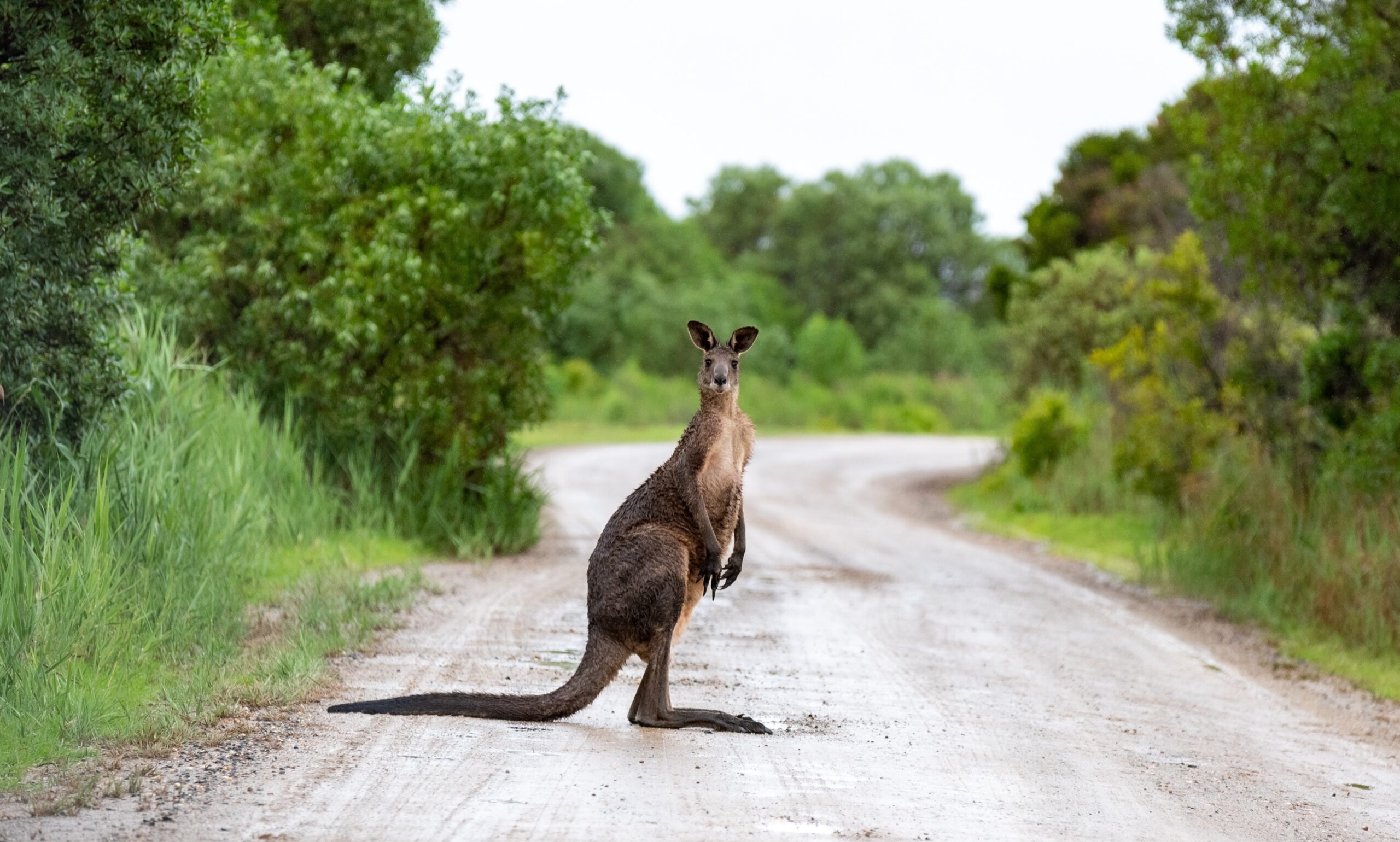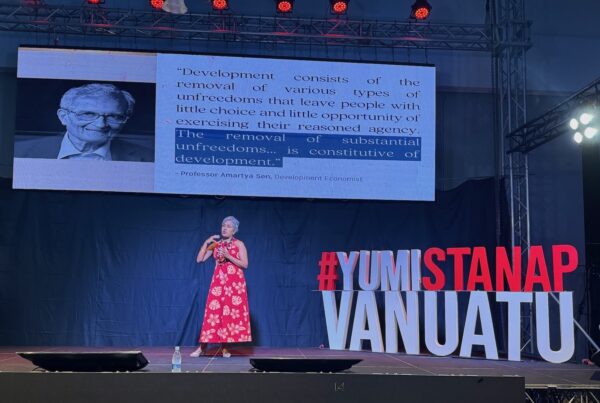By Terry Dwyer, Dwyer Lawyers, Canberra, Australia
Australia was famously described as “the Lucky Country” by the late journalist Donald Horne. It was, and should be, a cheap food, cheap energy, and cheap cost of living country.
Australia has indeed been very lucky, blessed by Nature with enormous natural resources per capita, but is usually governed with depressing mediocrity tempered by flashes of original genius. Australia’s greatest luck has been that other countries have even more mediocre governments which have done even more to destroy their economies and living standards through bad taxation and welfare dependency policies.
One of Australia’s greatest pieces of luck was that World War II prevented implementation of a national insurance scheme which would have eventually saddled the post-War Treasury with unfunded liabilities similar to those dragging down the USA and Europe.
Years ago, as a young Treasury Officer, I was asked to explain the Australian taxation system to a visiting delegation of European bankers. After the presentation, I was escorting an elderly Swiss banker out of the building. On the way down the stairs he said “Now I understand why we are rich and you are poor.”
Naturally, I asked him what he meant by that comment, made at a time when Australia was being compared to Argentina as a failed rich country.
He replied “In this country, you have everything. You have a climate from the tropical to the temperate. You can grow everything from bananas to apples. You have wheat. You have cattle. You have sheep. You have every mineral – coal, oil, iron ore, copper, zinc, uranium, gold. Yes, you are a dry continent but more than enough of it is well-watered. You do not have to think about working for a living. But in Switzerland all we have is mountains and some cows. We have to think about making a living.”
Over the years I have pondered the wisdom of that observation. Years later, I had similar comments from Singapore Inland Revenue officials. I had asked if Singapore would ever join a South East Asian tax harmonisation project of the kind the EU was promoting. There was a pregnant pause. An embarrassed silence. Then a young junior official piped up – “Perhaps if we had some of Australia’s natural resources, we could contemplate Australia’s tax rates.”
I burst out laughing and replied “In your position I would have said exactly the same thing.” Then they all smiled and explained that Singapore had nothing. It would just be a swampy tropical island if it did not think about how to attract business. Low tax rates or exemptions were a crucial part of its necessary development strategy. They looked to raise revenue from land and compulsory provident fund contributions to keep tax rates on business as low as possible.
Both of these encounters illustrate a fundamental point. Australian governments have been “happy go lucky”, easy spending creatures since colonial times. Colonial governments could pay their budgets by selling off land or collecting royalties from gold.
Capital inflow, booming asset values and alienation receipts have been par for the course. Selling off assets and squandering a patrimony are deep and bad habits of Australian governments
Fortunately, running counter to this, has been a streak in the Australian psychology which has had the vision of making a great nation. By the 1880s, colonial governments were imposing land value taxes to recover some of the value so freely and cheaply given away to the great landholders. By 1907 New South Wales was imposing land rates on unimproved land values in a “world first” to ensure that the Crown recovered the cost of infrastructure and public services from landholders. This was being done while Lloyd George, Winston Churchill and Philip Snowden could not collect a tax on land values in the UK as it was too administratively difficult!
From industrialisation to de- industrialisation
After Federation in 1901, following Victoria, Australia had 70 years of protective tariffs to encourage Australian industrialisation. The means may have been ill adapted, but the vision was clear. Australia saw itself as a new emerging First World industrial nation like the USA, making the most of its natural resources by value adding to them, rather than merely digging them out of the ground or growing and exporting them.
Tariff policy in many ways stunted Australia’s growth but it must be confessed that it meant Australia had a manufacturing base when confronted with the prospect of Japanese invasion in World War II. After World War II, there was a policy of European immigration to increase the local domestic market and strengthen Australia’s industrial capacity.
However, artificial industrialisation which could only survive behind punitive tariffs was a waste of national resources and income. The Whitlam government in the 1970s reduced tariff protection in a process that continued through the 1980s and 1990s.
Unfortunately, the Whitlam government also ushered in a long term rise in government taxing and spending on welfare payments.
In the 1980s the Hawke Keating government, floated the exchange rate. The floating exchange rate acted as a shock absorber. After the Asian financial crisis in the 1990s, the Australian dollar fell to nearly 55 US cents. Australia survived the shock, like a sensible merchant, by cutting its prices by nearly half so that it least it could remain fully employed (unlike southern Euro countries today).
The then Treasurer, Paul Keating, also introduced a genuine reform and abolished double taxation of company dividends. Australia has a very pure imputation system of refunding company tax as a cashable credit against the personal income tax of shareholders. This tax reform meant that Australian companies were able to raise large amounts of equity capital from their shareholders to rebuild their balance sheets after the global financial crisis. A post 1980s system of compulsory superannuation has also built a large pool of savings to fund equity raisings.
Infrastructure run-down and monopoly pricing
However, not all “reform” is good.
Against sensible reforms such as reductions in tariffs and the introduction of imputation of company dividends must be placed misguided “reforms” which have driven up production and living costs. “User pays” is a phrase which has justified many disguised taxes.
Public infrastructure such as roads or electricity networks, telecommunications, water, used to be supplied by local or semi-government bodies operating as non-profit collective buying mechanisms on behalf of the public. They supplied essential inputs to productive activity at near to operating cost and recouped capital costs through rates on lands serviced. But many of these great monopoly infrastructure assets have been privatised since the 1980s.
Since the 1970s Federal and State governments have vastly reduced their actual spending on productive economic infrastructure. Most of their spending has been on current or social capital spending such as schools and hospitals.
There is still no modern national highway or rail system backbone to the productive capacity of the economy. Instead, governments have corporatised or sold off key economic infrastructure such as electricity power networks, ports, airports, roads. Foreign investors now control the electricity networks of South Australia and Victoria. An industrialising Meiji Japan would never have let foreigners control key assets such as roads or electricity networks.
But Australia, like Britain, has privatised assets poorly.
Governments ignored the warnings of Adam Smith that the private monopoly is always a dangerous thing. The asset bases of privatised infrastructure have been grossly marked up to justify huge increases in the costs of essential productive inputs. The result is that Australia has set in train a process of de-industrialisation with profound economic and social consequences.
The implications started to become apparent when BHP closed the Newcastle steel works which had been established in 1915. This was a widely unnoticed public declaration that Australia had abandoned the vision of being an industrial country.
Governments talk about new investment in infrastructure and announce plans. But when, as in New South Wales, they announce a plan to build a new railway line they announce a plan to dispose of other infrastructure assets such as electricity networks to private monopolists. Net infrastructure formation by the public sector remains negative.
Paradoxically, under the banner of competition policy “reform”, Australia has become a nation of legislated and rapacious private and public monopolies. Be they toll roads, privately owned ports, airports, electricity networks or generation power stations, every essential input into industrial production is subject to a monopolist’s toll charge.
In addition, the so-called independent regulators are shackled, whether by blind incompetence or by legislative fiat, with a system of regulation which insists on “recovery” of inflated replacement costs through charges upon users alone without regard to other sources of cost recovery such as rating lands benefited by infrastructure.
The net result has been that, as Australia has dropped its tariff protection, it has systematically hobbled its manufacturing industries and workers with higher costs of production and of living. Australia, once a cheap food country, has forgotten that a cheap cost of living can be a source of comparative advantage. The Manchester denunciation of the Corn Laws has been forgotten. There has been a proliferation of “off balance sheet taxes” – bogus user charges – levied by governments and private monopolists alike.
This is a strange paradox, considering that introduction of a goods and services tax (VAT) was justified to the business community by the argument that GST would get rid of indirect taxes on exports.
The net result has been that Australia, like Europe and the USA, has been de-industrialising a major way. Jobs have been exported to China and elsewhere.
There is nothing wrong with being a quarry, or a farm, provided that you are an efficient quarry or farm. But there is a lot wrong with shooting yourself in the foot or throwing all your chips on one bet. The bet may go bad. By massively increasing the costs of living and of essential inputs to industrial production, Australia has narrowed its economy and ensured that it has lost the prospect of increasing productivity and living standards through manufacturing, which produces the highest value added
jobs in an economy.
Australia has become a nation of well-paid miners and low paid motel workers changing sheets. She gambles that high wages in the mining sector will flow through to low productivity industries such as tourism or clerical work in governments. She has few bets on other higher productivity industries. From riding on the sheep’s back, Australia has jumped onto riding on the iron ore train or the coal train, while failing to invest in cheap and efficient infrastructure. When you fly over Newcastle NSW you see queues of 20 to 30 ships lining up in the open sea waiting for a berth every day. It is not good business to fail to serve customers promptly – the world does not owe Australia a living.
Sovereign risk
Instead of worrying about the country making a living, the Federal government has exacerbated sovereign risk for productive industry. On the basis of an animal rights TV documentary, the government shut down live meat exports to Indonesia, damaging Australia’s closest neighbour. Similarly, the government bowed to Green activism and revoked a fishing trawler licence almost as soon as it was granted. The timber firm, Gunns, has gone into receivership after years of government-pandered Green campaigning. Meanwhile, eco- ideological “reform” of irrigation threatens to shut down much of Australia’s inland food production.
The most outstanding government back-flip was the introduction of a very high carbon tax having gone to an election promising none – further neatly nullifying what should be Australia’s comparative advantage in energy costs.
Public finances
At the same time as Australia has hobbled and run down its manufacturing industries, Australia has been squandering its tax revenue in current expenditure and running down public capital formation.
Australian public finances used to be run on the cash accounting system. No account was taken of increasing values of public assets.
While this may offend the sensibilities of some accrual accountants, cash accounting for public finances is not necessarily silly. If you are not going to sell the White House or the Houses of Parliament, who cares about their market or replacement value as a public asset on a national balance sheet?
What matters is how much of current cash flow each year is being spent on creating new assets or just paying out money to pensioners or as political bribes or other current purposes. While “cost recovery” has been used to justify all sorts of industry levies or impositions on infrastructure users, current spending on pensions or health is rarely recovered.
Paralleling decline in public sector capital investment in the essential inputs to industrial production has been a massive expansion since the 1970s in welfare and transfer payments. As more people have become eligible for various welfare
or transfer payments, often on a means tested basis, there has been a rise in taxation rates. The combined effect of rising taxation rates together with income testing of social security benefits means that many people have very high equivalent marginal tax rates. If you make it
less attractive for employees to work through higher taxes and loss of social benefits while imposing higher cost burdens on employers, you should expect to see growing pockets of unemployment, alienation and social ghettos.
Yet this is what Australia, like Europe, is doing.
Australia is Greece or Latvia with minerals. Very few Australians understand this. Treasurers and their officials do not seem to understand that Australia’s allegedly brilliant economic performance through the global financial crisis is a product of luck and the gifts of Nature rather than of any genius of their own. When Mr Wayne Swan was nominated as the world’s greatest Treasurer, most Australians with any knowledge wondered how bad the rest of the world was.
The complete fiscal laxity of Federal and State governments is terrifying. Going from surplus to deficit in a boom is an amazing achievement.
After the financial crisis, the incoming Labour government, having inherited a surplus of some AUD20 billion, plunged into a wild spending spree and paid cash handouts of AUD900 per taxpayer in order to stimulate the economy. The Federal government is spending over AUD90 billion a year more than in the last year of the previous government. If stimulating the economy was required, simply cutting fortnightly withholding income tax rates would have been simple and easy. From inheriting some AUD70 billion in net assets, four years of deficits have mounted to over AUD140 billion. Yet the response of the government in this month’s mid-year economic and fiscal outlook is to announce a “surplus” built on playing silly games like bringing forward AUD8.3 billion in tax collections and seizing dormant moneys earlier.
The net effect has been that all Australian governments have increased their spending and run into deficit at the same time as their revenues have entered on a long period of potential stagnation. Capital gains tax collections at federal level and stamp duty collections at the state level have been heavily hit by losses in share markets and stagnation in property markets while baby boomers are starting to leave the PAYE workforce.
The Federal government has tried to arrest the decline in property values by jawboning the Reserve Bank to keep interest rates low and increasing subsidies for property purchases through first home owners’ grants. The Reserve Bank has been aided in keeping down interest rates by what seem to be artificially low consumer price indices being produced by the Australian Bureau of Statistics. But artificial attempts to prop up property markets at the expense of productive activity are no substitute for genuine property values sustained by real productive activity generating real demand.
Australia is potentially sitting on a crumbling property boom, funded by massive foreign borrowings and propped up by government manipulation of interest rates, consumer subsidies and bank guarantees. Australia is not that different in this respect to Ireland, Latvia or any other apparently successful economy relying on capital inflow through the banking system before the tide ran out.
While professing complete confidence in Australia’s brilliant Asian future – and it is thankfully true that Australia has a degree of export diversification which has been enviable in many ways – Australian governments have gambled on their luck. They have bloated their budgets with current expenditure on useless public expenditures and larger public sector employment without considering crumbling tax revenues. It is, after all, common sense that where the tax system booms because it is based on taxing gains it is likely to disintegrate when gains become losses and be left with a heavy overhang after a crash.
All this is rather a pity, given that Australia was a world leader introducing the taxation of unimproved land values which for generations provided a stable and growing non-distorting revenue base for the financing of public works.
However since the 1970s, rate capping imposed on local government councils, the abolition of rates-funded semi-government utilities in favour of corporatised state or privatised profit maximising corporations, has meant that less and less public revenue has come from stable revenue sources.
None of this would necessarily matter that much if Australia could continue to make a fortune selling off its brilliant natural resources inheritance. However when one sees that infrastructure costs, tax costs or wage costs are leading to a situation where Australia’s coal and iron ore exporters are potentially becoming uncompetitive with other rivals such as Mongolia or Brazil,
one wonders whether Australia has played its luck too hard for too long. When one further sees iron ore moguls suggesting that they need to import cheaper foreign labour to exploit Australian mineral resources one has to ask what is the point of Australian economic policy. If Australia fails to secure much public revenue from the export of its minerals resources and even fails to get jobs for its own people to dig up its resource endowment one wonders what the point of Australian economic policy really is.
The future
As China’s economy slows from stagnant exports to Europe and America and mal-investment such as empty cities bites, it is a question of time before an export dependent Australian economy also slows. This is where the crunch will come.
Australia has lost a competitive manufacturing base for employment and hitched its fortunes to exploitation of its natural resources base at higher and higher costs to the point of becoming uncompetitive while walking eyes wide shut into a collapse of global demand for those resources.
To run an economic policy of having decaying, underfunded, monopolised and over-charged infrastructure pushing up production costs while relying on historically extraordinary terms of trade for raw commodity exports to provide public and private revenue is rather foolish. Joseph in Egypt was not so unwise and did not spend all of seven good years’ grain revenue without any thought there might be seven bad years to follow. But modern Australian politicians do not read Bibles or the writing on the wall.





